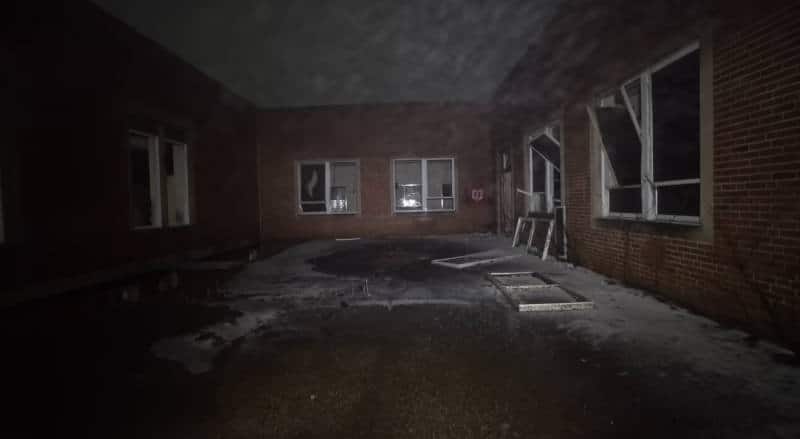Onyx Path Publishing first teased their new title Curseborne through some provocative viral marketing-style videos, leaving only questions. Theories abounded. After featuring a live play of it on their YouTube channel, people were able to pick up a lot about the features and mechanics of the game, but now that Curseborne: Ashcan Edition, a low-priced quickstart rulebook, is out, we have concrete information about the game.
What is Curseborne?
In the game, players take on the roles of Accursed, of which the Ashcan Edition gives five varieties: the Dead, the Hungry, the Outcasts, the Primal, and the Sorcerers; and one person is the Storyguide, the system’s version of a Dungeon Master. Each of these has its own perks and weaknesses, as well as subsystems unique to them. As a whole, Curseborne uses something called the Storypath Ultra system and is one of a few games that Onyx Path has announced. As far as what that is, it’s easiest to explain it in terms of its lineage.
Curseborne’s Storypath Ultra system is based on the Storypath system that Onyx Path developed some of their other game lines under, namely: Scion, Trinity Continuum, They Came From, and Dystopia Rising: Evolution, but with some changes that make the game easier to understand and run. Storypath itself is a derivative of the Storyteller system used in the Chronicles of Darkness games, as well as the better-known World of Darkness line. This means that Curseborne shares some DNA with Vampire: The Masquerade. As such, you won’t find any twenty-sided dice here, just a fistful of d10s.
Thematically, Curseborne is the spiritual successor to the Chronicles of Darkness series. Each of the Accursed types is actually fairly analogous to some of the different supernatural creatures with which long-time fans of both Chronicles of Darkness and World of Darkness will doubtlessly be familiar. The Hungry are vampires, the Primal equate to werewolves, et cetera. The Outcasts of Curseborne are particularly interesting because they harken back to Demon: The Fallen, more so than Demon: The Descent, seeming to lean more into pseudo-religious lore than supernatural spy thriller.
Liminal Spaces

At its core, Curseborne is a horror game. A variety of TTRPGs have covered the horror genre over the years. Some systems are built to tell tales of horror, while others are not, and not all horror games are trying to employ the same variety of horror. Vampire: The Masquerade tells a deeply personal horror by turning its players into monsters, while Call of Cthulhu has ordinary people (the PCs) investigating unknowable cosmic horrors. Curseborne appears to be based on the concept of liminal spaces.
If you’ve never heard the term before, you’ve probably still experienced it. An abandoned theme park; a truck stop late at night; a school after everyone has gone home. Liminal spaces are places that feel inherently wrong and unsettling to us, so named because they are thought to occupy a borderland, both the end of one thing and the beginning of another. If you’ve ever entered a location and gotten the creeps, or immediately thought to yourself, “I’m not supposed to be here,” then you have experienced a liminal space.
Curseborne is well-positioned to leverage this theming into a sort of urban legend/creepypasta horror. The Ashcan Edition does a good job of giving a couple of examples of how players can encounter liminality, as well as some ideas on how they can be more than just places. The intent seems to be that liminalities form the background of what other systems, like D&D or Pathfinder, would call encounters, whether focused on combat, socializing, or the utilization of skills.
What’s in the Ashcan?
As mentioned before, Curseborne: Ashcan Edition serves as a quickstart for the game. It has all the basic information about the game’s setting, and there are some very limited character creation options and a template for antagonists. You’ll need to refer to the free Storypath Ultra Preview to learn the core rules, however. There are also some premade characters you can use, and the last section of the document is an introductory scenario to get a game started.
If you’re interested, but you’re not too keen on horror, Onyx Path has also released two other Ashcan Editions for upcoming games: the dark fantasy The World Below, and the high fantasy At the Gates, and you can expect a similar amount of content for either of these. Their website also mentions another title in the system, a noir setting called Farewell to Heroes, which we can expect will also get an Ashcan Edition.
Unfortunately, there’s one thing that players might be expecting from the Ashcan Edition that’s conspicuously absent: a release window for the full game. Knowing how long these things tend to take, and with the knowledge that The World Below: Ashcan Edition was released in the summer of last year, we shouldn’t expect anything for at least another year or two. However, for interested parties, there is rumored to be a Kickstarter project launching in October for Halloween. Either way, until we hear more, I’m sure we will all be quivering with anticipation.
For More Great Content
Total Apex is an all-encompassing content producer. We provide heavily detailed articles every day on entertainment, gaming, sports, and so much more! Check out all our great sports content at Total Apex Sports. Check us out on X @TotalApexEandG and our other sites: Total Apex Sports Bets and Total Apex Fantasy Sports.


